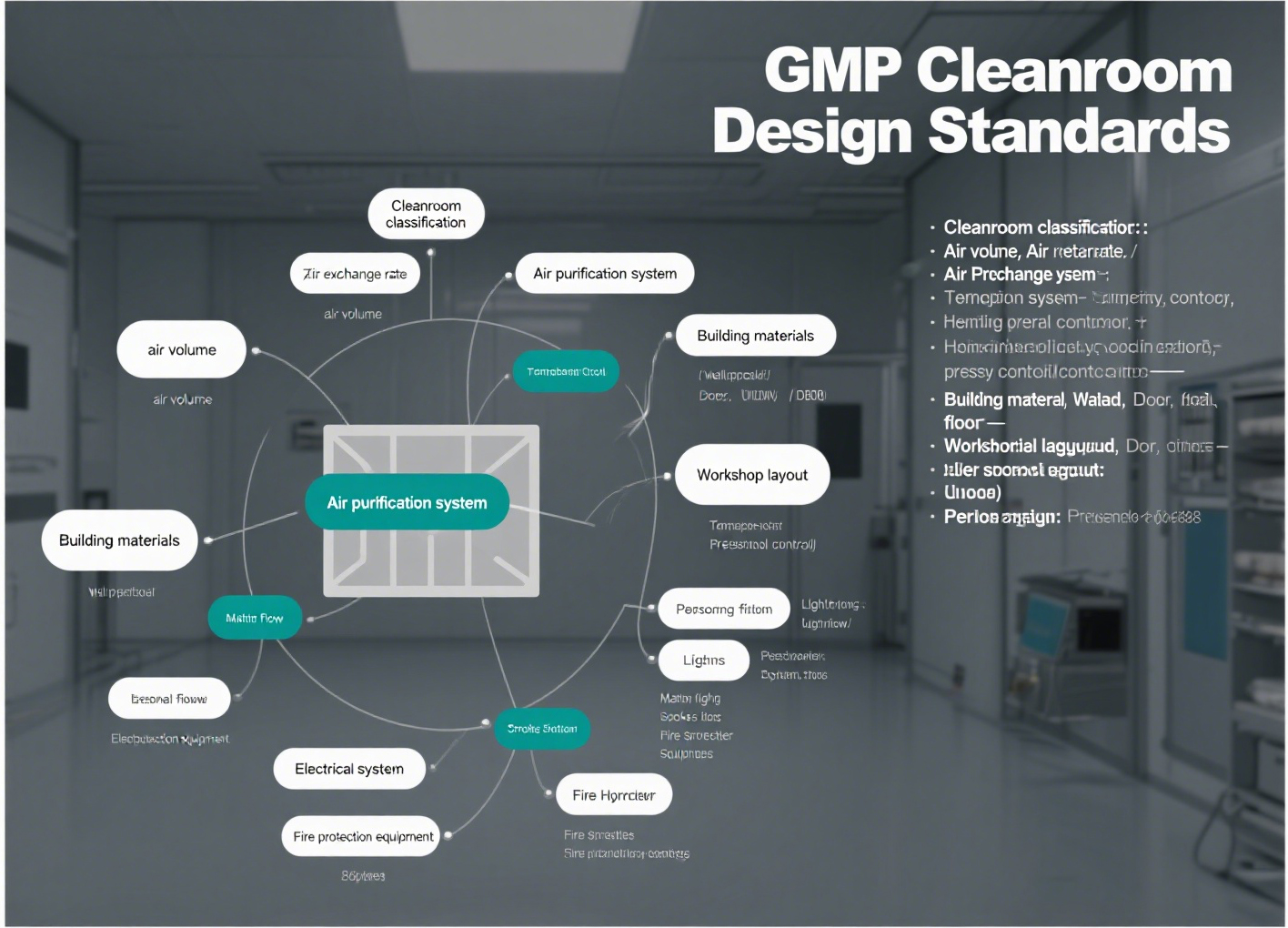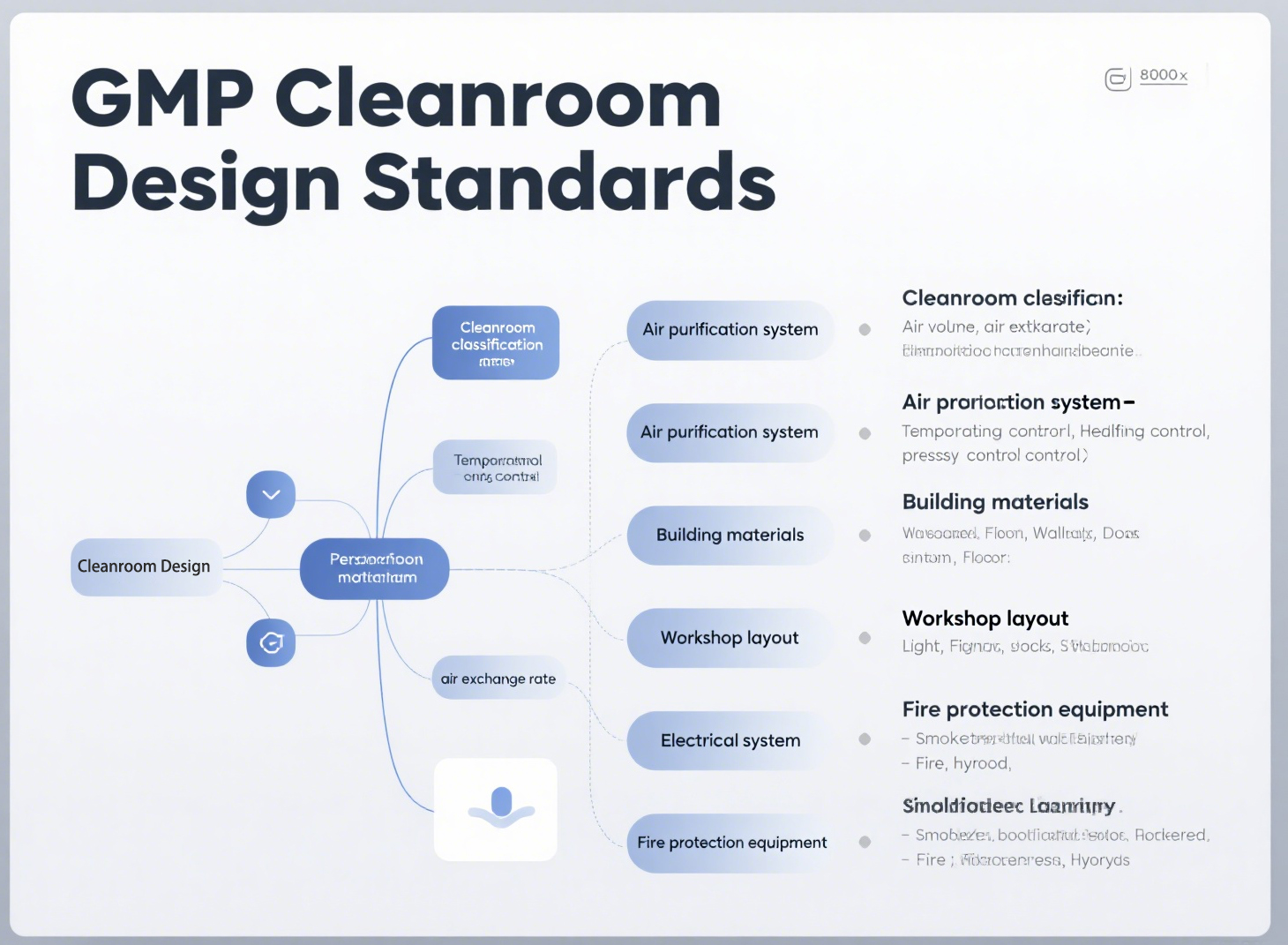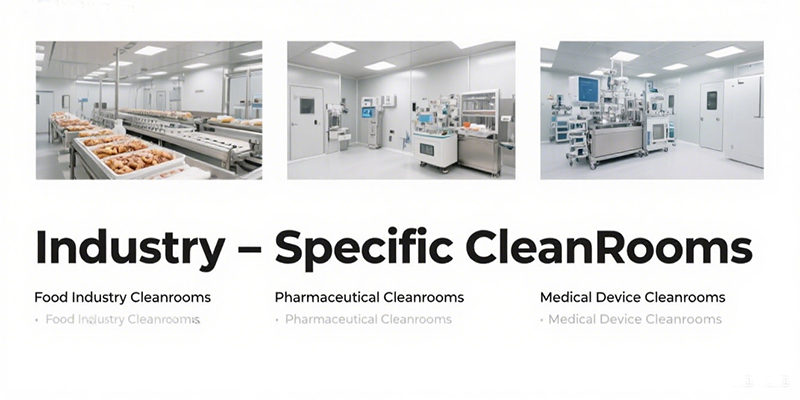Cleanroom design standards are primarily governed by ISO 14644-1, which classifies cleanrooms based on the concentration of airborne particles, ranging from ISO 1 (cleanest) to ISO 9 (least clean), with other relevant standards like GMP (Good Manufacturing Practices) focusing on environmental controls like air purity, temperature, and humidity. These standards dictate requirements for air changes per hour, airflow velocity, filtration systems, and the design of surfaces and facility layout to maintain the desired level of cleanliness for various industries.

Key Aspects of Cleanroom Design Standards
iso 14644-1 Classification
This standard defines cleanroom classes based on the maximum allowable number of particles per cubic meter of air, with lower ISO numbers indicating higher cleanliness. For example, an ISO 7 Cleanroom (equivalent to FED-STD-209E Class 10,000) permits up to 352,000 0.5-μm particles per cubic meter.
Airflow and Filtration
- Cleanrooms require sophisticated HVAC systems with HEPA filters to remove particles and maintain air purity.
- The design must ensure adequate air changes per hour and control airflow patterns (unidirectional, semi-laminar, or conventional) to effectively remove contaminants.
Environmental Controls
Beyond particle count, standards like GMP emphasize controlling temperature, humidity, and pressure differentials to prevent contamination and ensure process integrity.
Facility Layout and Materials
The physical design of the cleanroom, including its shape and materials used for surfaces (floors, walls, ceilings), must support the required airflow, facilitate easy cleaning, and be compatible with cleaning agents.
Testing and Certification
Regular testing for particle count, air pressure, and airflow is crucial to ensure compliance with the chosen ISO class and maintain the required standards over time.

GMP Cleanroom Design Standards
Good Manufacturing Practices (GMP) set the benchmarks for designing cleanrooms that ensure product safety and quality across various industries. These guidelines emphasize the importance of maintaining contamination control, emphasizing hygiene, and ensuring operational integrity. Cleanrooms designed under GMP Standards adhere to stringent requirements, ensuring that environmental conditions remain controlled and consistently meet set cleanliness levels.
Industry-Specific CleanRooms
Food Industry Cleanrooms
In the food industry, GMP cleanrooms are essential for maintaining hygiene and preventing contamination. These cleanrooms ensure that food products are produced in a clean environment, reducing the risk of contamination and spoilage. Key features include controlled airflows, temperature and humidity monitoring, and stringent personnel hygiene protocols. International standards often guide these cleanroom designs, ensuring compliance with food safety regulations.
Pharmaceutical Cleanrooms
Pharmaceutical cleanrooms designed under GMP requirements are critical for safe drug manufacturing. These environments emphasize maintaining controlled levels of particulates, ensuring sterility, and minimizing microbial contamination. The cleanroom design includes air filtration systems, strict gowning procedures, and regular environmental monitoring. International bodies like the FDA provide detailed standards that pharmaceutical companies must adhere to, ensuring that drugs produced are safe for consumption.
Medical Device Cleanrooms
Cleanrooms in the medical device industry play a crucial role in ensuring that products are manufactured under high hygiene conditions. GMP Standards guide the construction of these cleanrooms to control particulate and microbial contamination. The design must ensure that the environmental conditions do not compromise the integrity of the devices. This includes using materials that are easy to clean and maintain, alongside advanced air filtration systems to maintain a clean manufacturing environment. Compliance with international standards like ISO 13485 is essential in ensuring product safety and efficacy.

ISO 14644-1 CleanRoom Classification Table
| ISO Class | Particles ≤0.1μm | Particles ≤0.5μm | Equivalent FED-STD-209E |
|---|---|---|---|
| ISO 1 | 10 | 0.3 | - |
| ISO 4 | 10,000 | 35 | Class 10 |
| ISO 5 | 100,000 | 352 | Class 100 |
| ISO 7 | 35,200,000 | 352,000 | Class 10,000 |
| ISO 9 | 352,000,000 | 35,200,000 | Class 1,000,000 |
Key Takeaway
Cleanroom design standards are essential for maintaining product safety and quality across industries, with ISO 14644-1 and GMP serving as the foundational guidelines for contamination control and environmental integrity.
 +86 18186671616
+86 18186671616 Jason@cleanroomequips.com
Jason@cleanroomequips.com
 MENU
MENU



